Ludwig van Beethoven
An die ferne Geliebte
Adelaide, Op. 46
An die ferne Geliebte, composed in 1816, stands proudly at the beginning of Christian Gerhaher’s recital as the first important song cycle from any composer, that is, a series of songs in which the constituent numbers are linked together by a theme or narrative of some sort to form a cohesive whole. The six songs of An die ferne Geliebte (To the Distant Beloved) are set to poems by a minor poet named Alois Jeitteles (1794-1858). A solitary lover seated on a hillside gazes into the distance and longs for the object of his affection. The lover’s thoughts turn to blue mountains (the second song), a brook (the third), clouds (the fourth) and the glories of springtime in May (the fifth) as he thinks of love filtered through these images of pure, unspoiled nature. The final song brings the listener full cycle, with passages of both text and music from the opening stanza returning for a fulfilling close. The songs are heard without breaks, and piano transitions link some of them. The cycle is further unified by a tonal scheme centered around E-flat major.
“Adelaide,” which closes the program, was Beethoven’s first important song and dates from 1795 or 1796, about the time he was writing his first piano trios and piano sonatas. The text is by Friedrich von Matthisson (1761-1831), a much admired German poet in his day. The song is an expansive, impassioned outpouring of emotion as a man wanders about a garden and sees in his beloved Adelaide as a manifestation of the beauties of nature.
Robert Schumann
Dichterliebe, Op. 48
Schumann composed more than half of his total song output in a single year, 1840. His love affair with Clara Wieck, who was to become his wife in August, provided fertile soil for serious attention to love lyrics. Concurrently, Schumann was beginning to recognize that the larger musical forms (symphony, sonata, string quartet) were not developing in the direction he had expected, and he was prepared to look elsewhere for the full flowering of romantic music. This “elsewhere” became the Lied (song in German). Furthermore, Schumann recognized that the piano could play a highly significant role to play in vocal music – not mere accompaniment, but an equal partner.
Schumann composed Dichterliebe (Poet’s Love) in the space of about a week in May. In these sixteen songs, Schumann perfectly captures the psychological atmosphere of each poem. The piano writing, as in Schubert, is of great importance in defining the mood of each song. In Schumann, these moods are often carried to their greatest expressive heights in the piano postludes. All but two of the Dichterliebe songs end with postludes, some of them nearly half the length of the song itself. Another remarkable aspect of these songs is the vocal declamation. The music, with few exceptions, is perfectly welded to the words of the text with regard to metre, observation of punctuation and emphasis on the right word or syllable.
In the opening song, beautiful weather, flowers and birds are all part of the poet’s blissful reverie on love. But this love affair is doomed from the beginning, and the cycle traces a progression of regret, pleading, reconciliation and forgiveness. By the final song, the poet is so disconsolate that he prepares to drown his love, his sorrows and his dreams in a coffin in the deep sea.
Robert Schumann
Gesänge des harfners
The nine songs of 98a are all settings of lyric poems drawn from Goethe’s novel Wilhelm Meisters Lehrjahre (Wilhelm Meister’s Apprenticeship, 1821/1829). Schumann undertook these settings in 1849, the centenary of Goethe’s birth. Of the nine songs, four are sung by the mysterious waif Mignon, one by the promiscuous actress Philene and four (the even-numbered ones) by the Harper, an itinerant musician and a strange, confused, half-crazy, tragic figure who turns out to be Mignon’s father (the mother was the Harper’s sister), though neither character learns this traumatizing fact until late in the novel. One can surmise already that the story is filled with repression, frustration, loneliness, bitterness, withdrawal and skeletons in the closet. So too are the Harper’s songs, aside from the opening Ballad, which he sings “with free, declamatory expression” (as Schumann marked in the score) before a royal gathering.
Franz Joseph Haydn
Five Songs
Haydn was almost fifty before he first turned his attention to song. The reason for this late start is simple: he had had no requests or impetus to write anything of this type. But in 1781 he brought out a set of twelve, some of which were expressly meant to show a certain Leopold Hofmann, Kapellmeister at St. Stephen’s Cathedral in Vienna (Haydn referred to him as a “braggart”) that Haydn could do a much better job at setting the same texts than Hofmann. A second set of twelve followed a few years later. These early songs in German reflect the simple melodic and harmonic style of the Singspiel (German-language stage works with spoken dialogue interspersed with tuneful, folklike songs) and are always strophic in design (two or more verses set to the same music.)
Not until 1794-95, during his second London visit, did Haydn return to song-writing. Again, he produced twelve (this time two sets of six each, published in 1797). These are the English Canzonettas. Here the writing is more chromatic, there is more ornamentation, and the emotional range is greater. “The Wanderer,” for example, is a gloomy but beautifully etched setting of an Anne Hunter poem, with the image of wandering unmistakably portrayed in the piano. “Content” is the only one of the five Haydn songs on this program in a major key and the only one not concerned with loss, despair, death or the afterlife.
“The Spirit’s Song,” is a single, independent number Haydn wrote to another text by his London friend Anne Hunter. Stark in tone, dark in color, its text concerned with lonely ghosts, “The Spirit’s Song” nearly takes on the feeling of a dramatic recitative from an opera.
Program notes by Robert Markow, 2012.



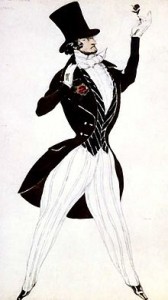
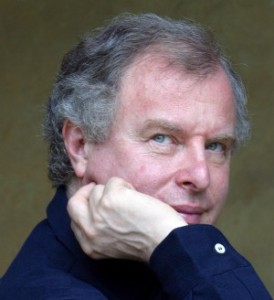
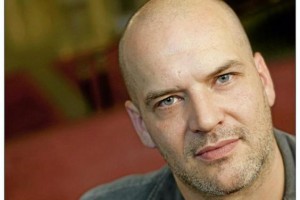 Thank you for taking time out of your busy schedule. How did the New Year start for you?
Thank you for taking time out of your busy schedule. How did the New Year start for you?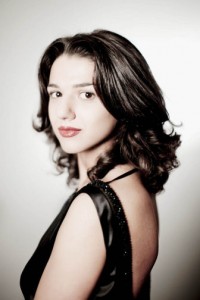 Khatia Buniatishvili, piano
Khatia Buniatishvili, piano Many of our patrons have pointed out the increasing cost of using the Rose Garden Parkade adjacent to the Chan Centre.
Many of our patrons have pointed out the increasing cost of using the Rose Garden Parkade adjacent to the Chan Centre.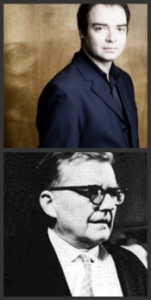 Perhaps it has been a deficiency in my musical education, but I have found it hard to warm to Shostakovich’s Preludes and Fugues.
Perhaps it has been a deficiency in my musical education, but I have found it hard to warm to Shostakovich’s Preludes and Fugues.